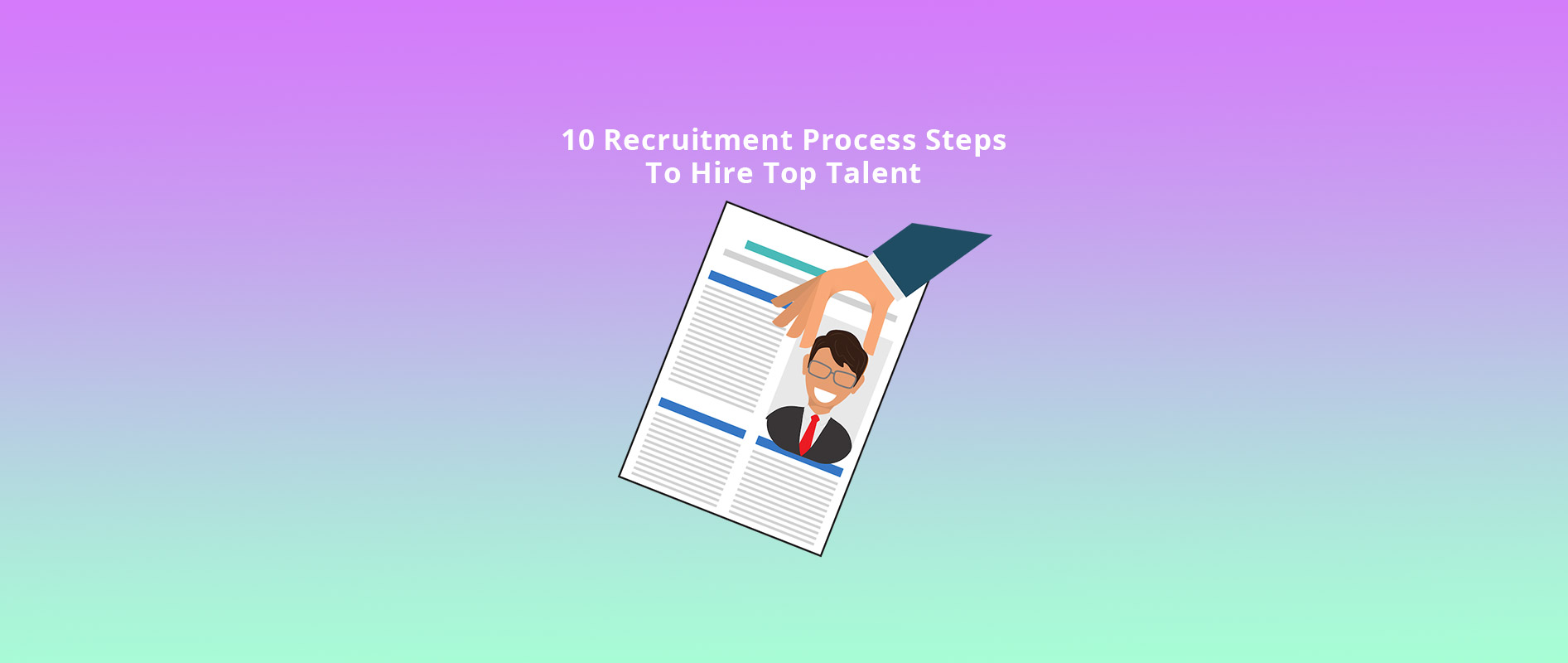Every recruiter’s mission is to locate top talent. In order to find such qualified candidates, recruiters have their own recruitment process that helps weed out unqualified resumes so that they send hiring managers only the best of the best! Although the process sounds easy, it’s anything but! The process can be quite frustrating and overwhelming, which is why many organizations look to recruiters for extra help.
The recruitment process can differ from recruiter to recruiter, but it always involves the same things and has the same end goal in mind – finding and hiring quality talent for open jobs. What works for one HR department might not work for a recruiter and vice versa. This is why it’s important for organizations to know what sort of candidates they want for positions. Knowing what you want will shape your recruitment process. Usually, the recruitment process starts in an organization’s HR department, but some companies add in consultants to help streamline the process.
At the heart of the recruitment process is recruiting. Organizations want A-level candidates and these types of top-tier talent need to be recruited because they aren’t actively searching for a job. They already have one, but would leave their current employer for more money, benefits and just a better place to work. These are called passive candidates and recruiting them is anything but easy. Because these types of candidates aren’t actively looking, putting jobs on job forums and boards won’t work. You have to actively go out and find these candidates and a solid recruitment process will be needed.
Here are some basic steps in the recruitment process that will help your organization hire top talent:
-
Know your needs
The first thing you’ll want to do is identify your hiring needs. If you don’t know this, you won’t be able to find the right people. The more you know about the job and the type of skills needed, the better you can go out and find that person. Don’t just go off of a job description, but talk with the hiring manager to see what new requirements and additions the job has. Jobs evolve just as people do, so you’ll need to stay up to date on the job descriptions to know your hiring needs.
-
Plan out everything you’ll need
Once you’ve figured out what you need when it comes to soft and hard skills, you’ll want to put a plan in place to find the perfect candidate. Map out what you need to do, where you’re going to find talent, who is involved and anything else that will help you fill the position. Follow the steps so that nothing is missed.
-
Go hunting
You can’t just sit back and expect applicants to respond to your job listings. You have to go out and hunt the best ones down! Because recruiters do this for a living, many organizations look to them for their expertise. You have to actively go out and
find the right talent and not just expect for them to come to you.
-
Identifying the right candidates
Sure, you’ll get a ton of resumes in for a listing, but are they qualified candidates? Anyone can find candidates, but not everyone will find high-level ones. Identifying the right candidates is key to weeding out the good from the bad. If you don’t go through the following three steps, you’ll have a hard time identifying viable candidates.
-
Recruiting top-tier candidates
Once you’ve found quality candidates, you need to now recruit them by selling them on the job and the organization. Great candidates aren’t just interested in a new job, but also a great opportunity with the right employer.

-
Screening via phone
Once you a few of the right candidates, it’s time to screen them! Many recruiters will do this over a quick phone call that will ask them a few questions regarding the position. Depending on their answers, you’ll be able to whittle down the list of candidates to bring them in front of hiring managers.
-
In-person interviews
This is one of the most important stages in the recruitment process. The interview is where hiring managers get to meet the person face-to-face to see if they’re a right fit for the job and culture. The interview stage cannot be too long or else top-tier candidates will lose interest. Try to bring them in for one interview instead of pushing it out to two or three. Also, you’ll need to communicate where the candidate is in the recruitment process. Keeping them informed will keep them from starting to look elsewhere.
-
The employment offer
The offer stage of the recruiting process can be the most delicate of them all. Just because you offer employment doesn’t mean that the candidate will accept it. If an organization is working with a recruiter, it should be them to reach out and make the offer since it’s what the candidate expects.
-
Hiring the candidate
Because not every candidate will accept the job offer, you’ll have to complete the previous step to candidate No. 2 and so on until your top three or five accepts it.
-
Onboarding the candidate
To ensure that the organization will retain the candidate, onboarding them is vital to the recruitment process. This goes beyond just employee paperwork and knowing the building. It’s about making them feel wanted even before they start work. Onboarding provides them with the right training and knowledge needed to get the job done right so that they feel confident in their new role.
Although each recruiter and organization will have different recruitment processes, these 10 steps are the gist of it all. If you’re ready to step up your recruiting game, join
Talentwolf. Create a profile to enhance your personal recruiting brand and expand your online presence. Grow your network faster, instant message and video call with potential clients and job seekers and so much more. Joining Talentwolf is a great way to stay competitive in an oversaturated industry.






